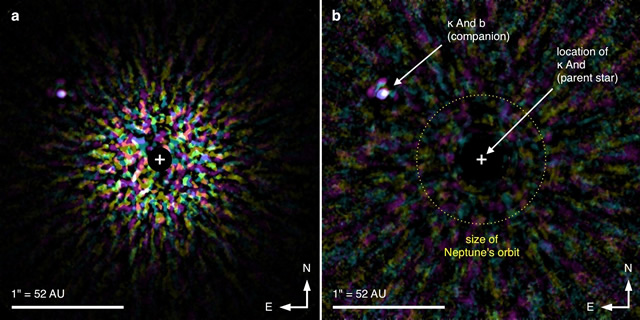Direct Imaging of a Super-Jupiter Around a Massive Star
| Science
An international team of astronomers, led by Joseph Carson (College of Charleston and Max Planck Institute for Astronomy), has discovered a "super-Jupiter" orbiting the massive star Kappa Andromedae. Using the High Contrast Instrument for the Subaru Next Generation Adaptive Optics (HiCIAO) and the Infrared Camera and Spectrograph (IRCS) mounted on the Subaru Telescope, the team was able to directly image the new exoplanet, a gas giant with a mass about 13 times that of Jupiter and an orbit somewhat larger than Neptune's. The host star has a mass 2.5 times that of the Sun, making it the highest mass star to ever host a directly imaged planet or very low-mass brown dwarf.

Right (b): A "signal-to-noise ratio map" generated from the image to the left. The colored speckles represent residual light that remains after subtraction of light from the host star. The white feature toward the upper left, representing a high signal-to-noise value, indicates detection of the super-Jupiter with high confidence. (Credit: NAOJ)